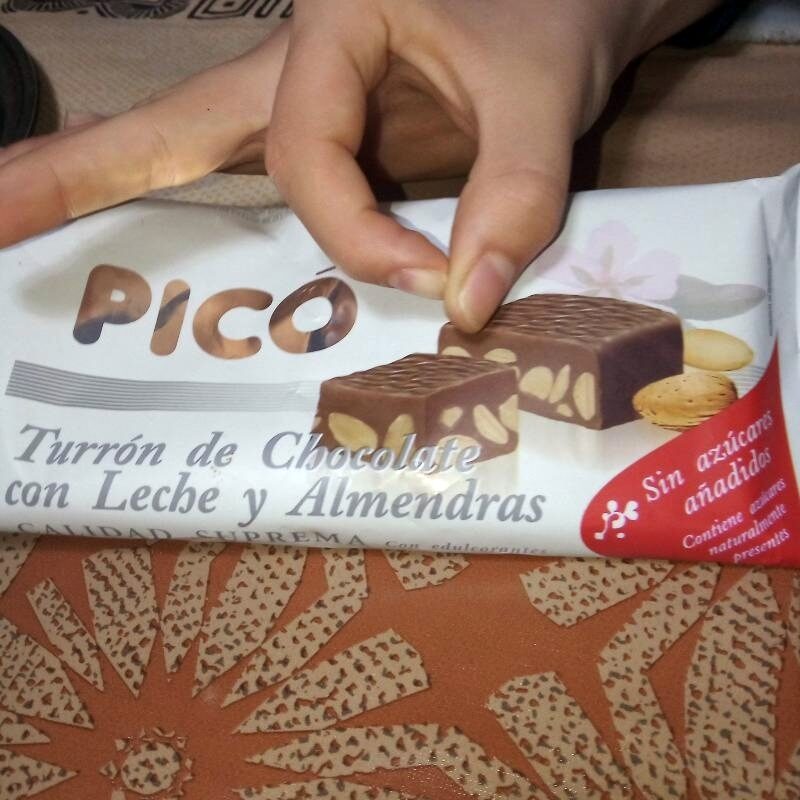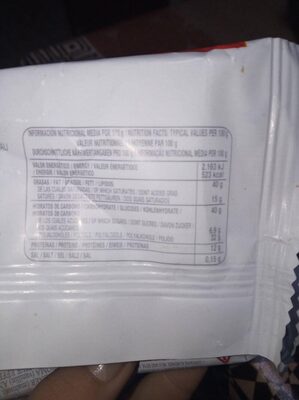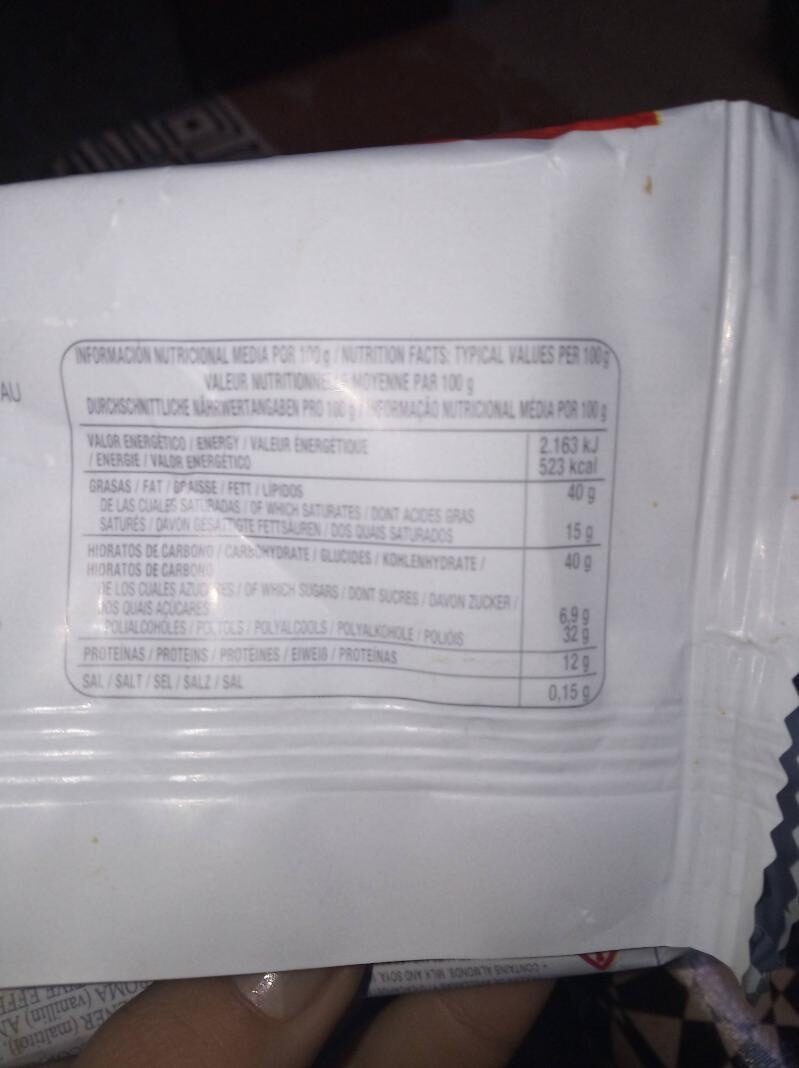Turrón de chocolate con leche y almendras sin azúcares añadidos - Picó - 200g
This product page is not complete. You can help to complete it by editing it and adding more data from the photos we have, or by taking more photos using the app for Android or iPhone/iPad. Thank you!
×
Barra-kodea: 8412115007942 (EAN / EAN-13)
Izen arrunta: Turrón de chocolate con leche y almendras sin azúcares añadidos
Kopurua: 200g
Markak: Picó
Kategoriak: en:Snacks, en:Sweet snacks, en:Confectioneries, en:Festive foods, en:Christmas foods and drinks, en:Christmas sweets, en:Turrón, en:Chocolate turrón, en:Chocolate turrón with almonds
Etiketak, ziurtagiriak, sariak:
en:Excessive consumption can have laxative effects, en:FSC, en:FSC Mix, en:Green Dot, No added sugar, en:With sweeteners

Link to the product page on the official site of the producer: https://turronpico.com/productos/turrone...
Dendak: Consum
Matching with your preferences
Ingurumena
Carbon footprint
Ontziratzea
Transportation
Report a problem
Datuen iturria
Product added on by kiliweb
Last edit of product page on by alia.
Produktuaren orria -gatik editatua elcoco, halal-app-chakib, openfoodfacts-contributors, org-app-elcoco, roboto-app, thaialagata, yuka.UnA4ckVxUU9tLzRWd3MxajF3ek4zZlZ6NkkrT0RHNnNkdGcrSVE9PQ, yuka.YlBnL0tyd1p2dVVMd01FSDBUWFg1Y05uMTdhVmRrT0lHczgySVE9PQ, yuka.sY2b0xO6T85zoF3NwEKvlmBdddTOkCyYGi7vl1-nz96fH7fMaN9PxZLZOas.











